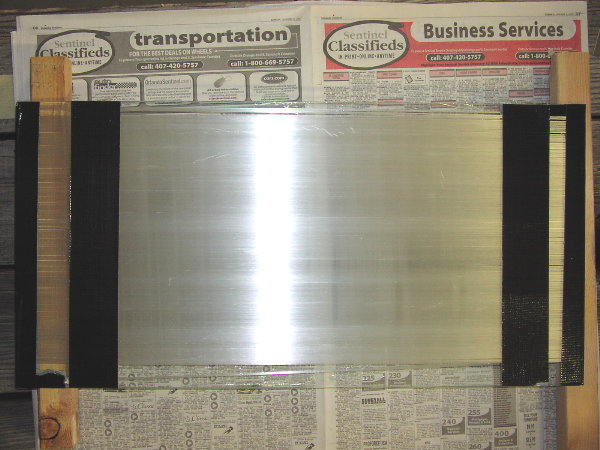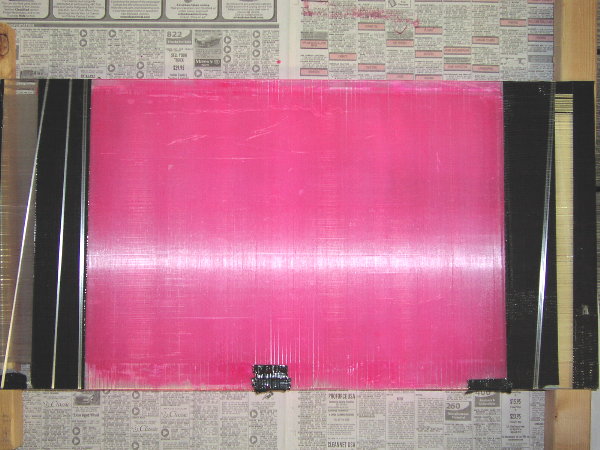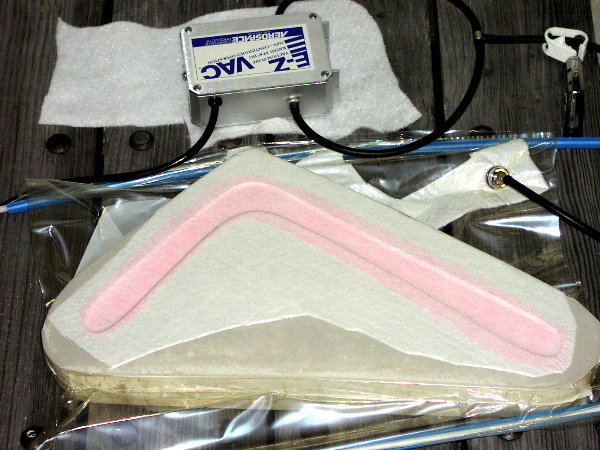Spectra Experiment
Spectra has properties similar to aramid. It is used to add strength, impact-resistance, and torsional rigidity. Its density is lower than aramid. Unlike aramid, it does not degrade when exposed to ultraviolet light.

Spectra comes wound on a spool. This is Spectra 1000, 1100 denier yarn. The yarn is composed of 240 filaments, each a little less than .001" in diameter.

At the far end I've fed the yarn through a guide, to prevent it moving side to side as it comes off the spool. Then it goes over and under the bars a few times to evenly spread the filaments before winding them onto the loom.

The loom is a 12" by 24" piece of glass covered with plastic wrap. Here it has been wrapped around the long dimension with yarn.

There are about 12 wraps per inch. The wraps have a tendency to stay bunched together due to small-scale twisting that happens during the wrapping process. They need to be smoothed before going any further.

This is what the same wraps look like after smoothing. I use a very high-tech tool for the smoothing... the side of a plastic ballpoint pen!

All the twists are worked to one end, then duct tape is used to make sure they stay there, leaving a nice smooth area in the middle for the next phase. Note that both sides of the glass are being used for layup, not just one.

The loom is now wrapped across the short dimension with yarn.

Epoxy is added to bond the two layers together. Pink pigment colors the epoxy to make the finished product easy to spot. The epoxy is worked into the material and the top layer is smoothed using the same ballpoint pen as before. The goal here is to get the fabric thoroughly wetted out, but remove as much epoxy as possible to keep the weight down.

After the fabric gels, it can be gently handled. The top skin of the boom is cut from the loom with a soldering iron, which melts through the Spectra and the plastic wrap backing it. A razor blade lifts the cutout from the loom, and the plastic wrap helps hold it together for transfer to the mold. Here the top skin is being vacuum bagged into the mold. The material for the bottom skin is allowed to cure on the glass, since the bottom is flat.

Spectra skins (with carbon fiber spars) and foam core ready for assembly.

Finished product. Ooops, I made it left-handed! :)

Total weight 10.5g, with 4.2g epoxy/microballoons, 3.2g non-crimp biaxial spectra skins, 2.0g unidirectional carbon fiber spars, 1.1g foam core. Weights for skins and spars include the epoxy they're wetted out with.